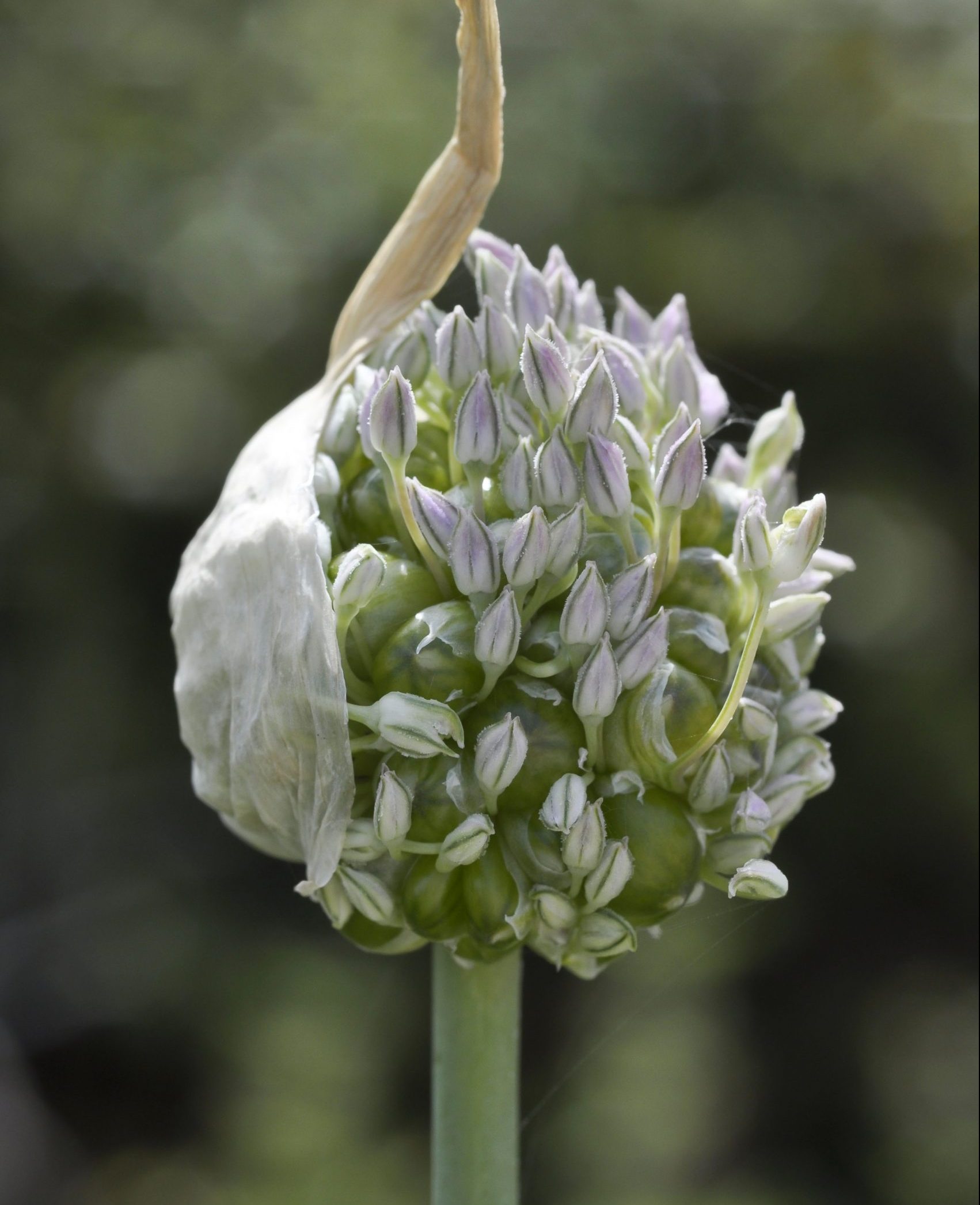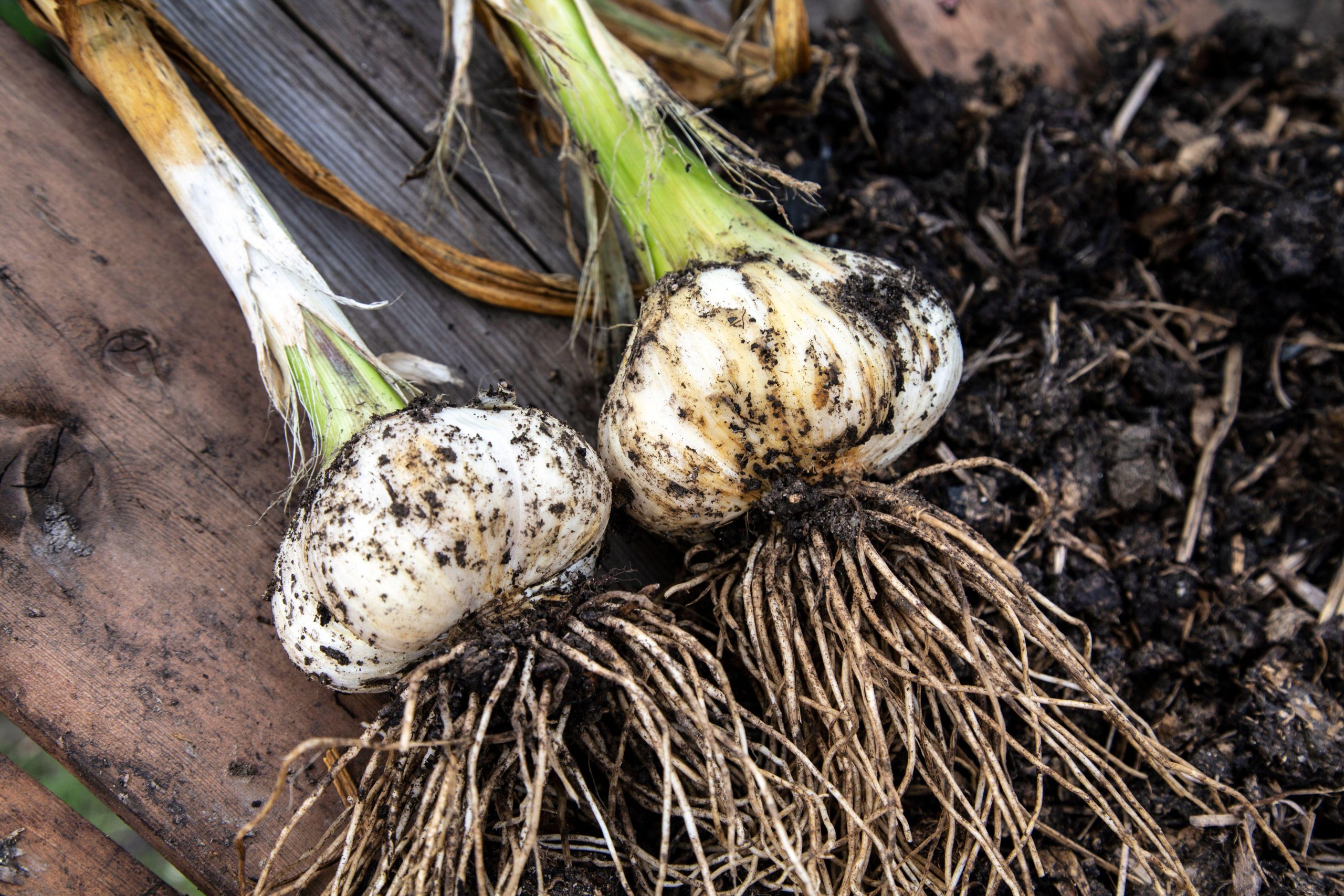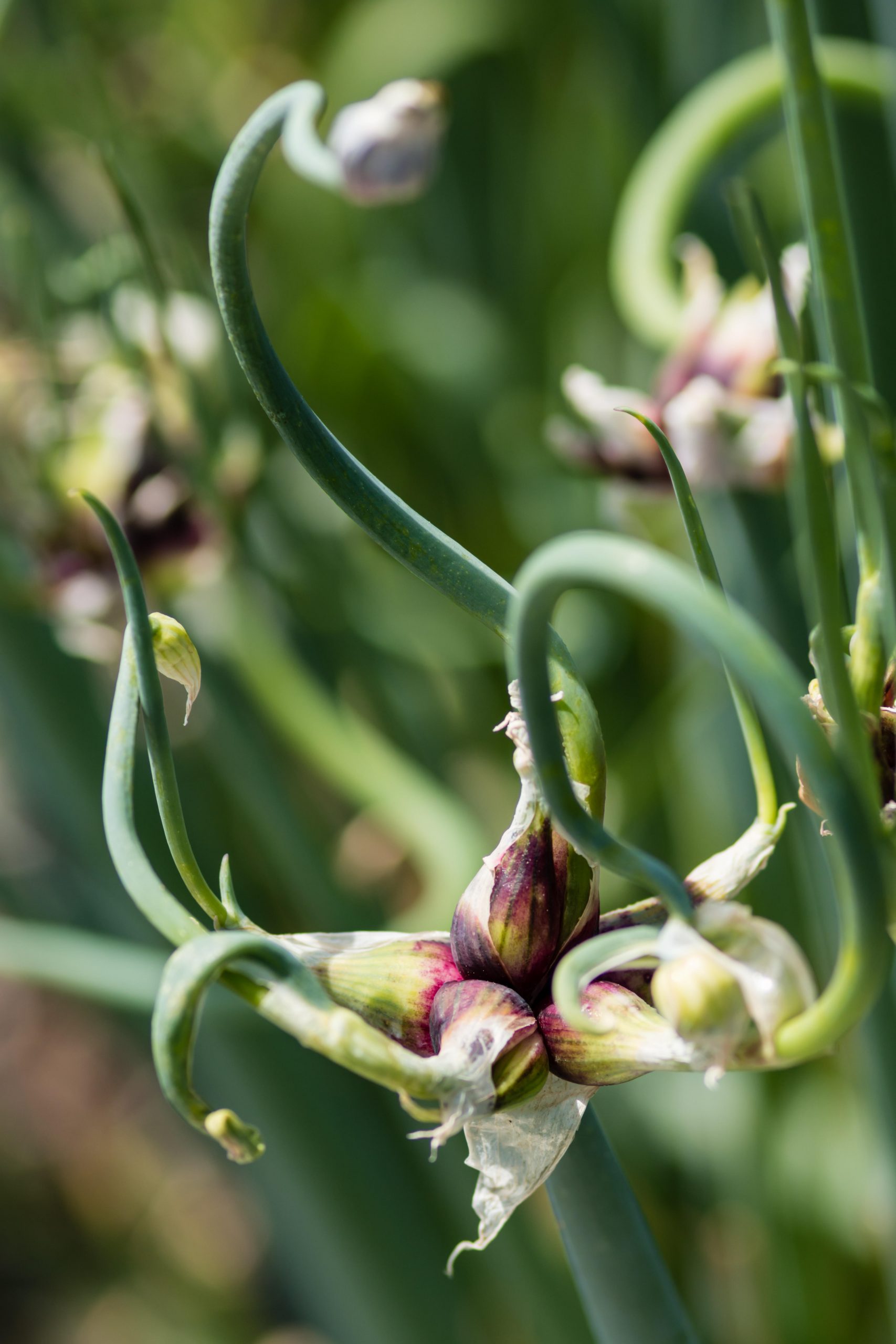Alliums: What to grow and how to grow them, from Elephant Garlic to Babington's Leek
If you want the best alliums, you have to grow them yourself. Mark Diacono explains how to go about it.


The compost heap is now a tangle of spent squash and courgette plants, of tired beans and peas, skewered with broken canes and hazel sticks. The veg patch is clear of summer: it’s allium time. I grow very few main-crop onions these days — they’re cheap to buy and swallow space — but I grow a few, as well as a little garlic. Sown ahead of winter proper, I’ll lift them all early next summer. Most of the alliums I favour are less well known; unavailable in the shops, I have to grow them to eat them — and eat them I must.
Elephant garlic is a favourite. More of a leek than a true garlic, it is sown and grown as familiar garlic, but the bulbs I lift in summer are as large as baseballs. Roasted whole, they turn sweet and succulent, and are perfect with roasted lamb or vegetables.
Fairly early in my gardening life, I discovered the Egyptian walking onion (Allium cepa var. viviparum) and it has remained ever present. It offers shallots, mini onions, spring onions and chives in a single perennial species. In early spring, chive-like leaves emerge, gradually swelling at the base to resemble spring onions; at the tips, small, delicious bulbils appear, at the base of those spring onions develop into shallot-like mini onions. All parts are delicious and, as long as you don’t harvest too heavily, you can have plenty of each through the seasons. The ‘walking’ is achieved by those tip-end bulbils gradually bending the stems to the ground, where they take root and become new plants. As the cycle repeats, it slowly colonises whatever space you allow it.

Perhaps my favourite allium is Babington’s leek (Allium ampeloprasum var. Babingtonii). If I’m designing an edible garden, this is high on the list: it is too beautiful and delicious to ignore. It also comes out to party when many others are heading to bed for winter: it begins growing in September, is harvested in winter and any unpicked leeks grow into 6ft-long stems with large, spherical, purple/white, bee-friendly flowers, before dying back in summer.
There are two parts I eat: the leek-like stems add a gentle garlicky onion flavour to soups and so on and the mini florets are wonderful scattered in salads and mayonnaise. Cutting the stems just above the bulb allows this easy perennial to grow back from the base. Being a seashore native, it is as tough as it is beautiful, too.
Society garlic (Tulbaghia violacea) is a half-hardy, South African perennial that many grow as an ornamental. I saw a bed of them outside a Michelin-starred restaurant in Normandy a few years ago and, in our Franglais, the chef and I managed to communicate that they were edible and that now he had tried them they would be on the menu.
It is quite the looker, with long thin leaves, like a more elegant chive, but the pale-pink flowers at their tips please the eye and taste so good. They carry a wonderfully intense hit of garlic without a hint of harshness and leave no trace on the breath, hence its name. They lose that flavour when cooked, and are best scattered over salads where they bring delicious punctuation. If you keep picking them, expect a flowering season from April to October.
Sign up for the Country Life Newsletter
Exquisite houses, the beauty of Nature, and how to get the most from your life, straight to your inbox.

The older I get, the more I cook with chives. They are available in the shops, but the flowers aren’t, and I use them more than the leaves. A few clumps of purple and the less common white-flowered variety (Allium schoenoprasum var. albiflorum) keep the border beautiful over a long season, as well as offering flowers for salads and chive-flower vinegar, which might be my favourite homemade vinegar: 10 flowers to about 350ml white-wine vinegar is a good ratio.
Siberian chives (Allium nutans) is a superb mildly garlic chive, as garlic chives (Allium tuberosum) pack an altogether more powerful punch. All are beautiful. The Welsh onion (Allium fistulosum) looks a little like the body-building brother of chives. Plump legs and sparkler-like explosions at their top make for a striking and productive plant: all parts are superb and, as with chives, I find myself using the large white/yellow flowers more than the leaves. Once established, you can expect a flush of fresh leaves to rapidly replenish those harvested.
There are others about which I would sing equally loudly — I’d hate to be without the nodding onion (Allium cernuum), daffodil garlic (Allium neapolitanum), three-cornered leek (Allium triquetrum) and the few-flowered leek (Allium paradoxum), to name a handful more.
Mark Diacono grows edibles, both usual and unusual, at Otter Farm in Devon — www.otterfarm.co.uk
Mark is lucky enough to spend most of his time eating, growing, writing and talking about food. He has written fourteen award-winning books, including A Year at Otter Farm and A Taste of the Unexpected (both won Food Book of the Year, and Garden Book of the Year). Known for growing everything from Szechuan pepper to pecans to Asian pears, Mark's refreshing approach to growing and eating has done much to inspire a new generation to grow some of what they eat. He was involved in the early days of River Cottage, appearing in the TV series, and writing four River Cottage books. Mark writes to a global audience on his best-selling Substack: Mark Diacono’s Abundance.
-
 Designer's Room: A solid oak French kitchen that's been cleverly engineered to last
Designer's Room: A solid oak French kitchen that's been cleverly engineered to lastKitchen and joinery specialist Artichoke had several clever tricks to deal with the fact that natural wood expands and contracts.
By Amelia Thorpe
-
 Chocolate eggs, bunnies and the Resurrection: Country Life Quiz of the Day, April 18, 2025
Chocolate eggs, bunnies and the Resurrection: Country Life Quiz of the Day, April 18, 2025Friday's quiz is an Easter special.
By James Fisher